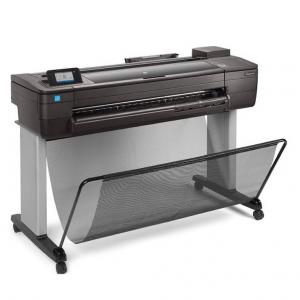Understanding the Basics of Professional Printing

You were probably taught in school that Johannes Gutenberg invented the printing press. Like so many things you learned in school, this is not quite true—the Chinese beat Gutenberg by 400 years. Either way, for most of its history, printing was mainly done by professionals. It wasn’t until the relatively recent innovations of duplicators, mimeographs, xerography, and finally digital printing that quality printing migrated to the realms of offices, schools, and households. There is, of course, still a place in the world for professional printing. It’s best to engage the services of a professional printer for jobs that a standard office or home laser printer can’t handle, such as:
- Specialized paper, such as newsprint or glossy stock
- Non-paper media, such as plastic, glass, metal, or fabric
- Unusual sizes, shapes, and weights of paper
- Decorative features such as embossing and cutouts
- Adhesive labels
- Specialized printing techniques, such as engraving
- High-volume print runs
- Various types of binding, such as saddle-stitch, coil, and perfect binding
A Special Niche: Large-Format Printing
Another area that is often best left to the professionals is large-format printing, for things like architectural drawings, maps, posters, displays, and signs. Although architectural, engineering, and graphic-design firms often do purchase or lease large printers, there are some drawbacks:
- Large-format printers are expensive to buy and maintain—the “small” ones start around $3,000, and larger ones can set you back up to $20,000. Then there’s the ink: HP cartridges for large-format printers can cost $100–$200 per color.
- Large-format printers are notoriously tricky to set up, load with media, and operate. Figuring out how to do a large-format print from software such as Acrobat, Creative Suite, AutoCAD, or Microsoft Visio often involves a good deal of trial, error, and wide-format paper (which, incidentally, is also not cheap).
Using a Professional Printer: How to Prepare
If you decide to engage the services of a professional printer—not just for large-format printing, but for anything that you aren’t prepared to handle yourself—you actually don’t need to know much beyond a general idea of what you want to achieve. Your friendly neighborhood (or online) professional printing service will be happy to explain the terminology, walk you through the options, and offer suggestions to get the best results for your printing needs. The HP-Designjet-T730-ePrinter
However, there are some things that a professional printer needs to know about your project, so be prepared to answer questions such as:
- What is your budget?
- Who is your audience?
- In what environment will the printed output be deployed (indoors, outdoors, lighting conditions…)?
- How durable does it need to be?
- How many copies do you need?
Beyond that, there are a few things that drive professional printers batty. Avoid these:
- Incompatible file formats: Most professional printers can accommodate a wide range of file formats, but not everything under the sun. Some will have trouble with files generated by obsolete software versions. Find out what file format your printing partner needs.
- Not enough information: Depending on the printing technique, a professional printer may need more information than is provided in the file—things like registration marks, Pantone colors, and so on. Find out what’s required for the job you’re asking the printer to do.
- Late-breaking changes: There’s nothing as frustrating as getting through a print run and then finding out there’s and incorrect date or misspelled name. Make sure it is 100% correct before giving it to the printer.
Professional printing brings professional results. Come prepared, and your professional printer will make you a happy customer.
